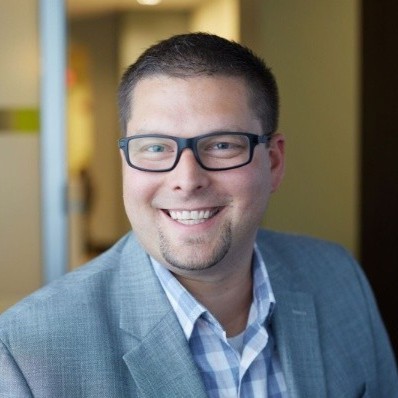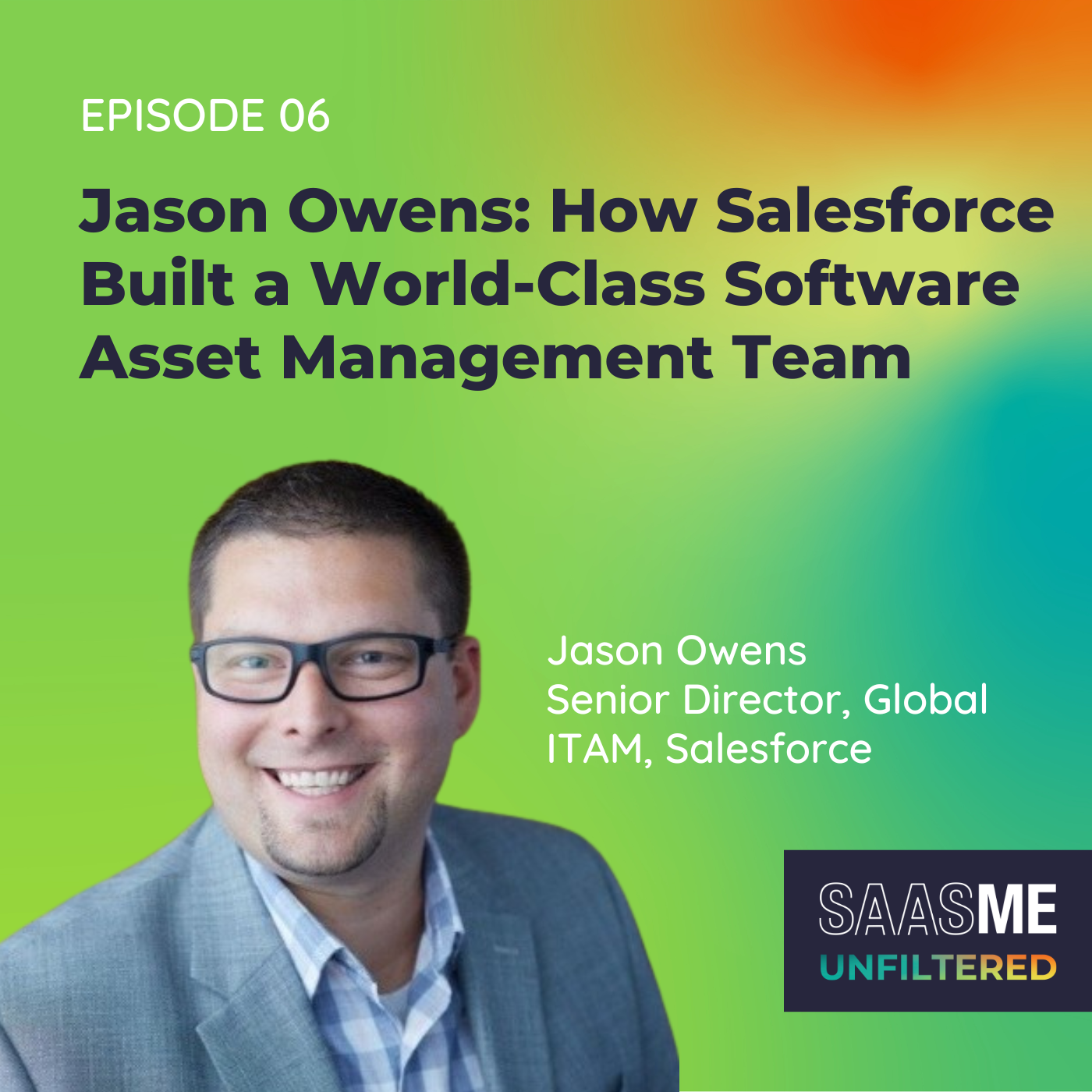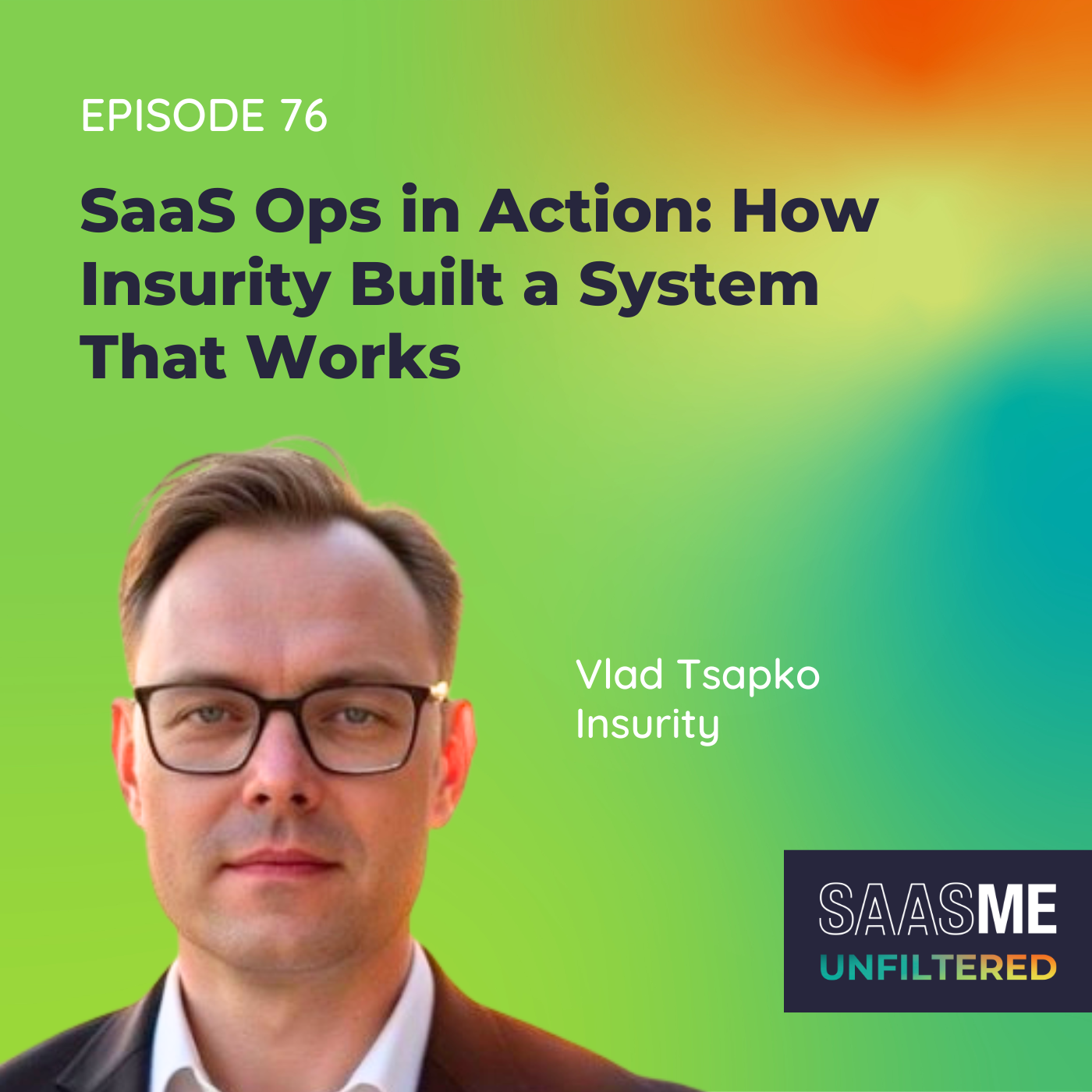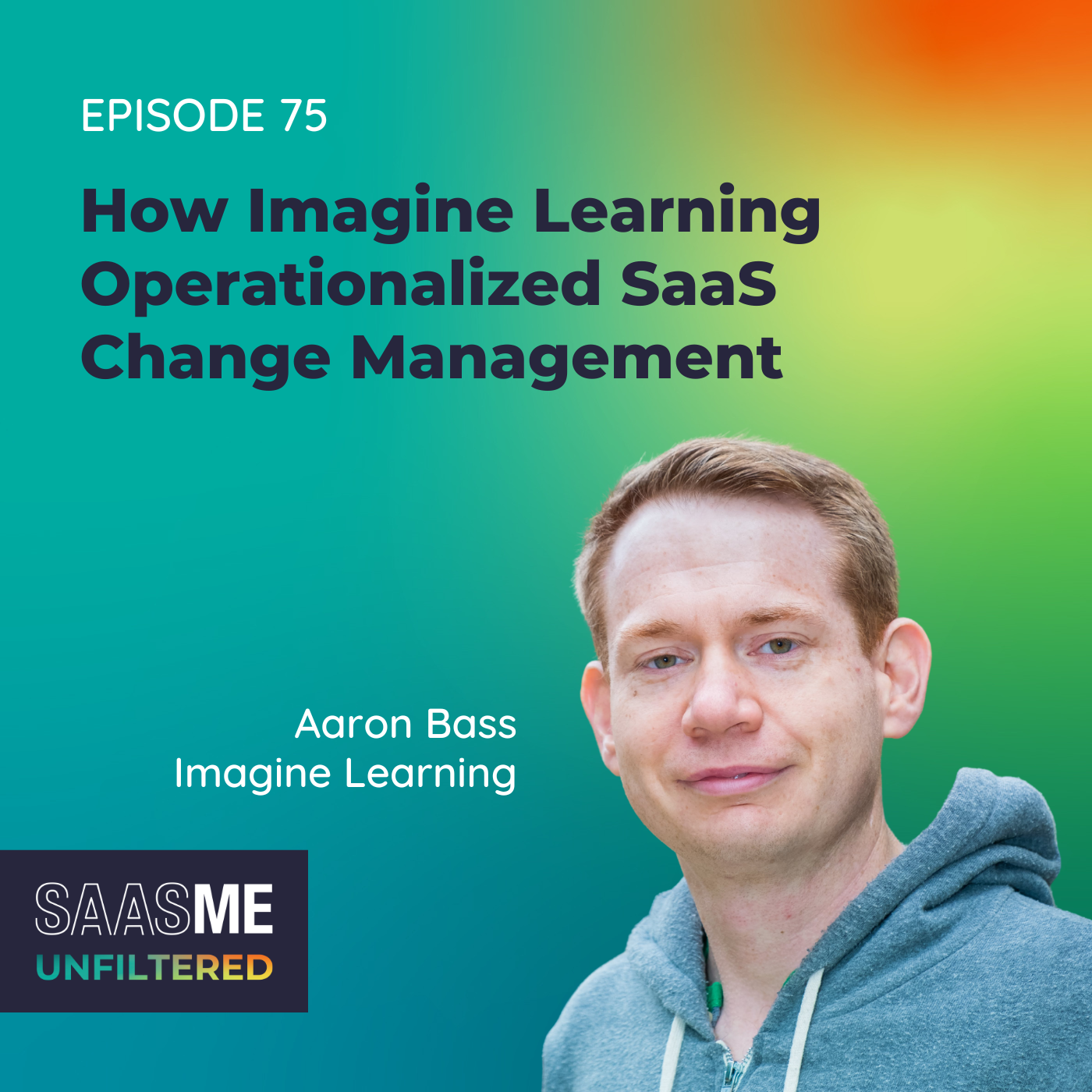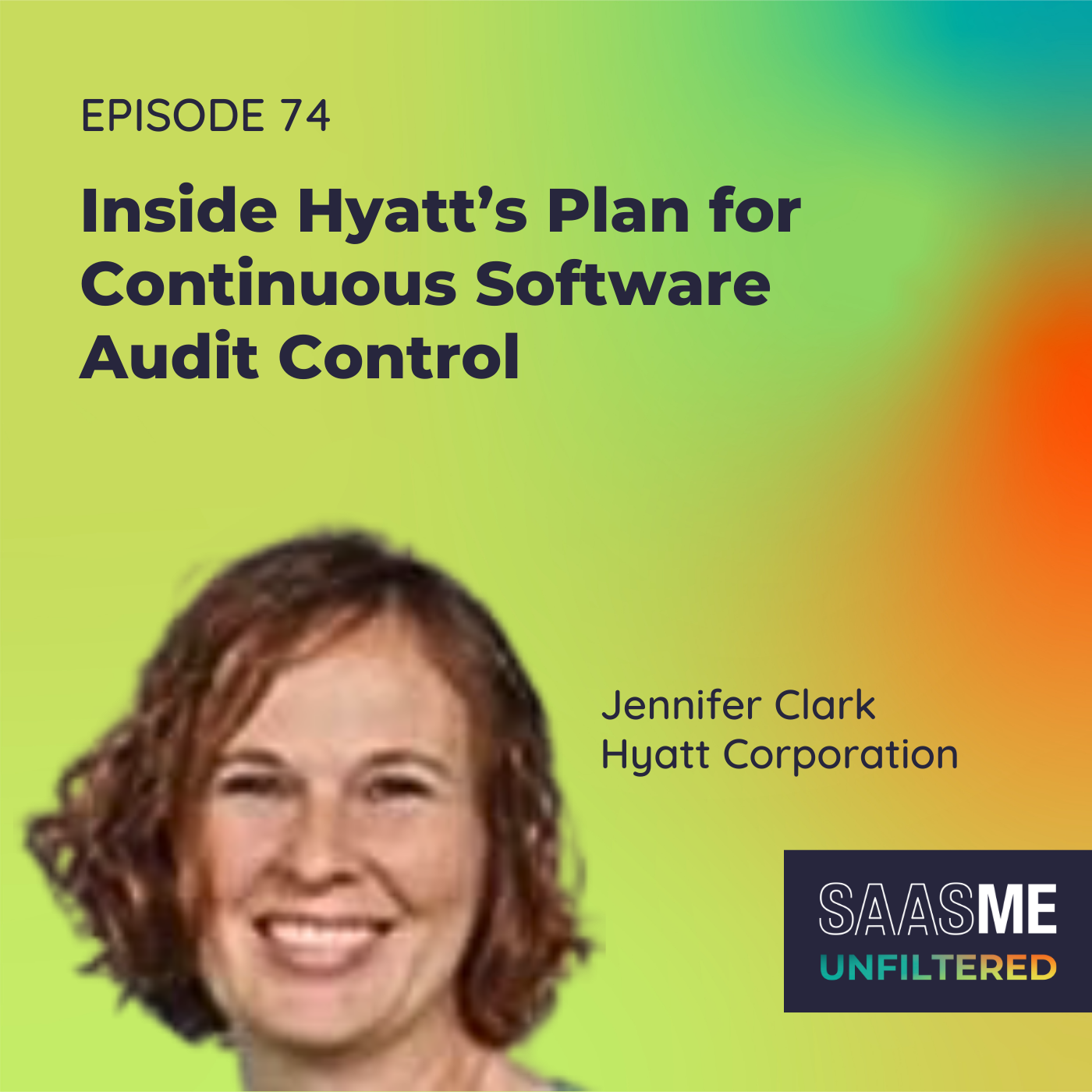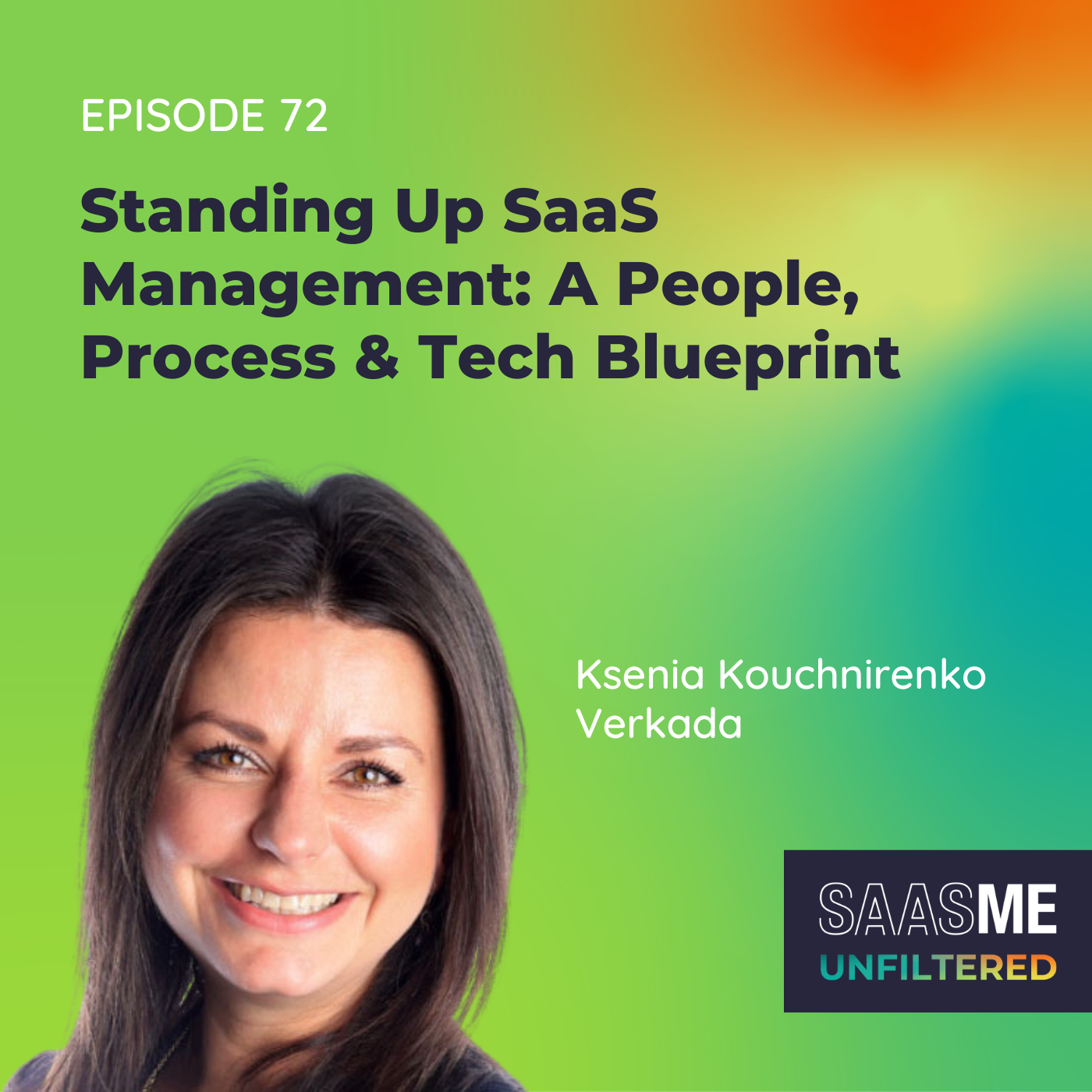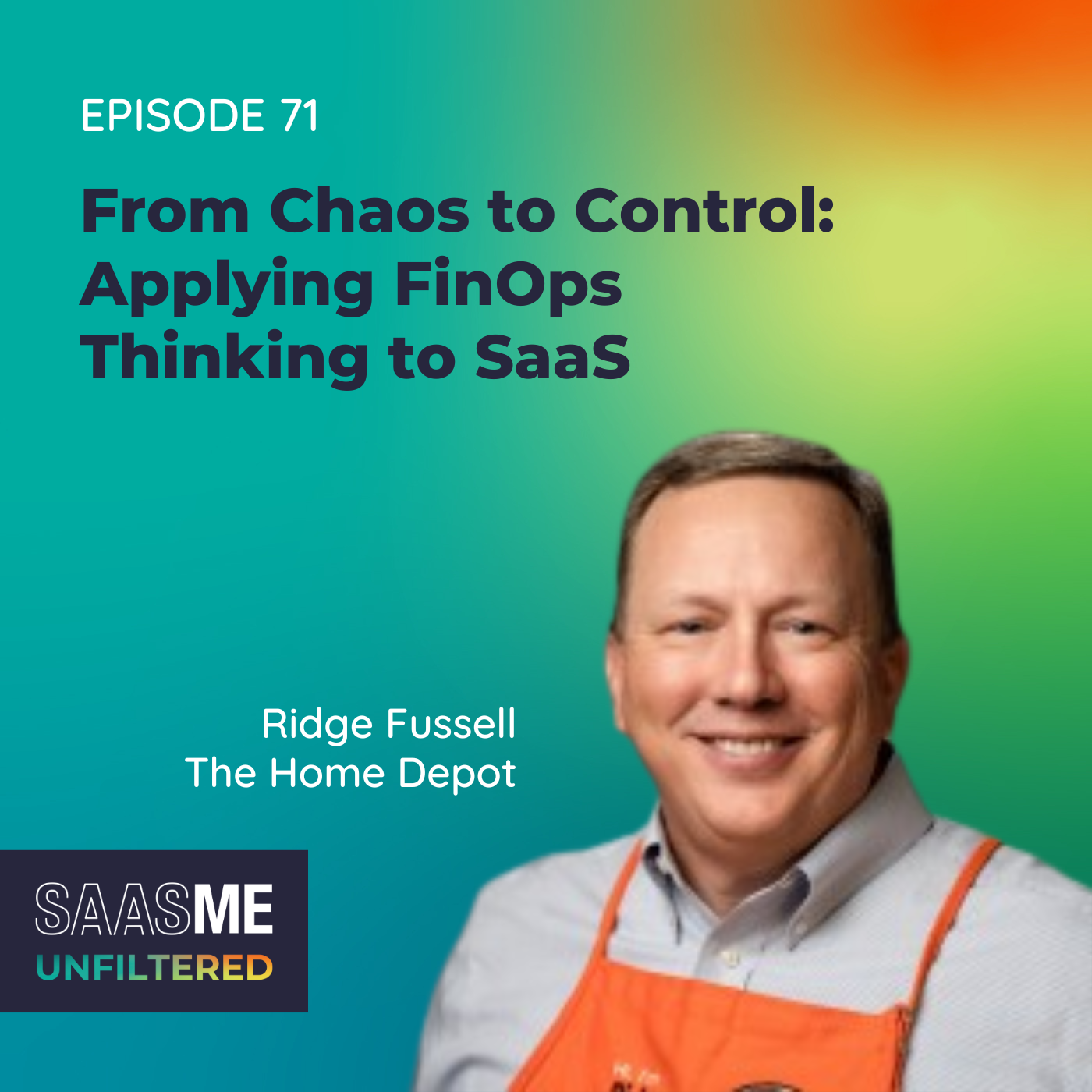Jason Owens (Part 1): How Salesforce Built a World-Class Software Asset Management Team
- 0.5
- 1
- 1.25
- 1.5
- 1.75
- 2
Jason Owens: If we could get the story out to more people about how transformative software asset management, particularly in the SaaS space where people are just out swiping credit cards and agreeing to click through terms that more people would say," Oh, we really need to invest in this for our business because we can leverage that money and then unlock value and put it into things that are transformative for the business rather than just spend."
Cory Wheeler: Hello. Hello and welcome to SaaSMe Unfiltered, the SaaS Management podcast. The show would give it to you straight, real life advice from pros, knee deep in SaaS every single day. SaaS Management superheroes, just like you. We're back for another episode of SaaSMe Unfiltered. So excited to have you join us. I'm Cory Wheeler, Co- Founder& Chief Customer Officer here at Zylo.
Ashley Hickman: I'm Ashley Hickman, Manager of Customer Success at Zylo.
Cory Wheeler: Okay. We have a heck of a guest with us today. This professional has a lot of experience in IT. Over 20 years of experience in IT, seven of those at Salesforce. Familiar company? One that I used to work at myself. This person has had accelerated roles through the University of Phoenix, UnitedHealth Group, Stratosphere Quality with a real focus on asset management and desktop support, and now is at Salesforce managing all of desktop support and software asset management, 20 employees, globally, managing the provisioning and life cycle asset management with a budget of over 100 million in software assets. Please welcome to the show, Jason Owens from Salesforce. Jason, thanks for joining us.
Jason Owens: Thanks, Corey. Thanks, Ashley. Really excited to be here and share the story around the importance of SaaS Management in the SAM space and share some of the things that have worked for us for our program and team at Salesforce.
Cory Wheeler: Awesome.
Ashley Hickman: Yeah. Absolutely. Let's get into it, Jason. Let's get started. First of all, really excited. I know we had the opportunity to chat a little bit before and excited to have you on today. You have an amazing, just a wealth of experience and your background that's led you to, ultimately, the great leadership role that you have at Salesforce today. Would love to hear how that has evolved for you at Salesforce.
Jason Owens: That's a great question. I feel like a lot of asset management practitioners and software asset management practitioners, in particular, don't ever really start out to be software asset managers. I know, I didn't ever think that," Hey, that's a viable career opportunity. I'm going to go do that." Let alone have a leadership role in the same space. I came to it through being open to new opportunities and seeing the real need for software asset management, particularly in the SaaS space at several of my career stops throughout my journey. When I was at Stratosphere Quality, it was the first time I really was exposed to SaaS Management as a concept. It was the first time I ever dealt with a Microsoft audit, and just how we worked to pivot from on- prem Microsoft licensing to Office 365 and the deprecation replacement of an on- prem outlook and exchange platform with cloud and thought, there's a lot of really difficult things here. There's a lot of nuance and it's also fun. I think that's one of the things that I don't think a lot of people know about software asset management, every day is different. There's no widget stamping. It's not, I'm going to go to work. I'm going to do the same four things and go home. It's a new complex puzzle, sometimes more than once a day, but almost every day, there's really cool problems and challenges and opportunities you get to figure out. When you have a team around you, I'm so fortunate to have with our SAM program here at Salesforce, everybody just rolls up their sleeves and says," Hey, this is pretty cool. Let's figure out how to fix it." I don't know. It's something that I would highly recommend for IT professionals that are new in their careers. There are not enough software asset managers or same practitioners to fill the need these days.
Cory Wheeler: Right.
Jason Owens: I don't expect that to change in the near future. It's only going to continue to get more critical that we have high performing SAM practitioners across all functions of the industry, not just within software development companies like Zylo and Salesforce. Really, every company that has a SaaS footprint has need for high functioning SAM practitioners in their business.
Cory Wheeler: That's great. I want to pull on that thread a little bit. You were first introduced to the need for software asset management strategies around SaaS at Stratosphere Quality. Software asset management as a practice was born out of on- prem investments and audience and things like that.
Jason Owens: Right.
Cory Wheeler: Now, you're at Salesforce, right? Salesforce is absolutely progressive, cloud first and primarily cloud within your business. Coming into Salesforce, what was your SaaS perspective? Were there specific things, internally, that were specific to SaaS that generated the fun, the oh shit moment that we need to get a program and better visibility around all of this? Did that happen and maybe, talk through that evolution internally at Salesforce?
Jason Owens: That did happen and about three and a half, four years ago, I was leading a desktop support team at Salesforce. Our internal support team is called, Techforce. You're well aware they're, I may be a little biased, but I think they're one of the highest performing desktop support organizations in the world and had an opportunity. One of my former bosses had moved over to the role I'm in now, leading all of IT asset management and saw that we had a need to invest in the same space and said," Hey, I'm going to post this role. I'd like you to apply for it and go through the interview process. If you're the right person, I think you could make an impact here." I interviewed, took the role, senior manager of software asset management. When I joined, we didn't really have a program. It was some really awesome SAM professionals, Joe Ryder and Dylan Hollerin and Chris Finds, but that was it. It was the three of them. There was no program and they were really focused at that point and a limited scope of our on- prem end user desktop software, right? Small percentage of the portfolio focused on making sure that those licenses were used and useful and that our investment was performant, but Will had a little bit bigger vision, right? He said," I think we can pivot this out across the rest of the software portfolio within business technology." We came in and really, built out a roadmap. We're fortunate to have a third- party come in and do an assessment and help. Leadership always loves when you have an external party that can give you the same assessment of the things that you've been telling upward, right, as a check on, okay, these people really do know what they're talking about. We were fortunate enough to have some investment in the third- party recommendations and built out the roadmap. Now, today, it's crazy to think that this December is four years for me in the role at software asset management here at Salesforce.
Cory Wheeler: Yeah.
Jason Owens: My seven years at Salesforce as a company is in October. Being, now, more than half of my career at Salesforce leading this program, we're like," I don't like to take credit at all for it because the work is done by the global team." Today, we've gone from... I joined. I was the fourth member of the team. We now have 20 plus software asset management professionals, practitioners all around the world. We have a really well- rounded, fully functional team. We've done quite a lot of growth, probably three or four different evolutions in how we delivered software asset management in that time. We started out," All right, let's align with sourcing. Let's go with their categories." Everybody is assigned to a category that matches up with a sourcing partner that did not work. We've gone through a couple iterations. Now, we have our team broken out by the lifecycle categories of the software life cycle. It has unlocked so much potential and value for us that we have single points of ownership for each part of the software life cycle. Martin Brophy who's a fantastic manager.
Cory Wheeler: Okay.
Jason Owens: He's in Dublin. He leads onboarding and M&A because those are hand in hand functions. Pratik Sharma and Hyderabad that is maintenance, distribution and provisioning, so the middle part of a life cycle. Then Carmen Worth on the Pacific coast in Seattle, she manages our renewals function, which as you can imagine is, it's a beast.
Cory Wheeler: Yes.
Jason Owens: In our portfolio, does a great job. By splitting up the ownership rather than per title or per category, say," Okay, this is a renewal. We're going to Carmen and her team. This is new software onboarding. Okay." We're able to publish internal documentation that says," Hey, if you need this help, this thing, here's who you go and talk to." It's really helped us get away from escalation culture and just the," I don't know who to talk to or who moved my cheese phenomenon," that it's like," All right, this is renewal. I'm going to go talk to Carmen or someone on her team," right, if it's maintenance, distribution, critique, et cetera. It's really unlocked value for us. We don't have a check cycle, right? It's like," Hey, this is your area. You own it. Go deliver it. If you have questions, I'll help, but I'm not here to second guess everything you do." If we're not making some mistakes, we're not providing enough value to the business.
Cory Wheeler: Sure.
Jason Owens: It's been really great.
Cory Wheeler: That's an incredibly strategic way to think about building out your organization. I love the specialization. I love aligning it to a life cycle. That's fantastic.
Ashley Hickman: Are you blown away by the amazing work our SaaSMe Unfiltered guests are doing? Now, you can join them at SaaSMe, the industry's only SaaS Management event. Hear from the experts, discover trends and learn from the pros knee deep in this shit every single day. Register today @ saasme. com. That's saasme. com.
Cory Wheeler: What was that, that secondary thought there? What was the impetus to all of this growth? Specifically around SaaS, thinking about those moments that generated the need for growth or the unexpected outcomes that you had to scramble around, what was the start of all that?
Jason Owens: The one really big, oh, crap moment for us happened in my first year when we got to a renewal event for audio and visual editing platform, right? We didn't have really good controls. We didn't have discovery, both either on- prem or in the SaaS space at all. We were very reactive to audits and renewals, and really, any vendor outreach. We weren't doing great vendor management. We're just handing out licenses to a lot of different platforms like, you show up at a baseball game and they're handing out whatever like, the little mini helmet of the knight.
Cory Wheeler: Yes. Yeah.
Jason Owens: It's like, first 5, 000 people get it, right?
Ashley Hickman: Yeah.
Jason Owens: You get in the door, you get it. We get to a renewal event. It turns out that this audio visual and editing software platform had been picked up by in our sales org. After we did some digging, we found out all several hundred folks who had gone through the manager approval process got the approvals. Were using it to edit cat pictures and cat videos-
Cory Wheeler: Yes.
Jason Owens: ...of what is really-
Ashley Hickman: That's amazing.
Jason Owens: ...expensive business software, right?
Cory Wheeler: Right. Right.
Ashley Hickman: Yes. Yes.
Jason Owens: We had a significant overage and Joe and I had to go talk to the VP levels and the CIO, at the time, for the PR approval and say," Hey, look, here's the governance." This is in my first three months in the role when we get to this room. I'm thinking," Oh geez." I'm like," We're having a mid six figures overage plus a million plus and forward looking true up and we're in trouble. I'm in trouble." It's one of those things where like," Oh geez, am I going to have a job?" Right? Just like, lizard brain goes like," Oh crap. I'm not going to have a job."
Cory Wheeler: Yes. Yeah.
Jason Owens: We were able to actually steer the conversation and say," Hey, look, this is where, if we have a discovery platform, if we implement governance, we can, one, avoid these things, but also unlock that money that we would have to spend on that for investment in transformative business process and platforms." We've done that. It's a testament to everybody on the team that we've been able to unlock so much value. As a program, we pay for ourselves. It's one of the metrics I track is making sure that not just that we're cost neutral from a fully loaded salary perspective, but they were actually returning significant value. Over the last four years, it's basically run six and a half to seven times the cost of our discovery tools-
Cory Wheeler: Sure.
Jason Owens: ...plus our FTE dollars that we return in value through cost avoidance and cost savings versus budget to the business, which is fantastic. It's one of those things like, I think if we could get the story out to more people about how transformative software asset management, particularly in the SaaS space where people are just out swiping credit cards and agreeing to click through terms, that more people would say," Oh, we really need to invest in this for our business because we can leverage that money and then unlock value and put it into things that are transformative for the business rather than just spend."
Cory Wheeler: Yeah. That's great.
Ashley Hickman: I love that. Those must have been some really good cat videos though, I got to say.
Cory Wheeler: Yeah.
Jason Owens: Yes, I'm hopeful. I wish we had saved some because they did send us some at some point and we're just like...
Ashley Hickman: This is the value we're getting from this software.
Jason Owens: Right.
Ashley Hickman: We need these cat videos.
Jason Owens: Yeah. I hope they closed some deals with those cat videos at least.
Ashley Hickman: Yeah.
Cory Wheeler: They go viral, right?
Ashley Hickman: Yeah. That's amazing. Really love how you have gotten to a point around aligning SAM resources and leadership to the life cycle of applications. That's awesome. I love that. Also, to your point, just removes friction within the business of who to go for for what at each stage and function. At the application level, in terms of true ownership of these titles, these softwares, all the different SaaS applications, what does that look like? How is that set up at Salesforce?
Jason Owens: I'm going to take a step back and do a little explanation before I talk about how we have it set up, because it's not an area that we are... I like to talk about a four- level maturity roadmap within software asset management. It's not something that we're at the fourth or even the third level maturity on. It's one of great ways that we see as we continue to go forward, how we're going to unlock value. I tend to think there's three main places in business organizations where software asset management teams sit, right? They either sit in the security org and their focus is completely on governance, compliance and security. They sit in the finance org and it's all about the purse strings. Are we going to spend this money or not? I feel very fortunate that we don't sit in either of those places. We sit within our internal IT org, which we call, Business Technology. It means that we get to focus on all three of those. Obviously, at Salesforce, trust is in everything that we do. We are very mindful. We work very closely with our sourcing partners to make sure that we have appropriate terms in place, that we're secured, performant, that we work with enterprise security to make sure that we have full security reviews of any application that's coming in or before we even allow it to be onboarded as a vendor. Because we sit in business technology, we get to focus on the third leg of that stool. That's the enablement piece. It's like, how do we unlock value from our software for our people to go do their jobs, right? Because at the end of the day, that's what this stuff all is, their tools in the tool bag that individuals can use to deliver their value to the organization. Contextually, getting back to the question, looking at, all right, we're sitting there in the space. One thing that we did early on was we said," Okay, rather than having budget aligned to each service manager or product owner or product manager from every application that's in the BT portfolio, we centralized all that budget directly into our cost center. We meet weekly with our finance business partner and we run down what our upcoming renewals, where are our risk, where do we see potential variance, where could we have positive variance, where can we have savings? This next piece is the piece that we don't do well yet that we're working on. It's the focus for the next year is, then how do we take our life cycle arrangement and interface directly with the service manager, with the product owner, with the systems administrators that are running the platform within business technology to get their discrete roadmaps for each platform and technology so that we can then use that to inform how we are forecasting the spend, both this fiscal and in the out fiscals, right?
Cory Wheeler: Right.
Jason Owens: We're not doing it well yet, but we're working on it. Really, I feel like that's our next big chunk of maturity and governance is," All right, how do we unlock that and how do we figure out?" We're experimenting with some different things. We've got a quarterly QBR that's focused on online business applications that are in our budget. We ask people to come that really hasn't worked that well. We've also got a Slack channel set up, Slack first, work from anywhere, Yay team, right?
Cory Wheeler: Yeah.
Ashley Hickman: Yeah. Yeah.
Jason Owens: We've actually found there to be some really good value there because as we hit 120 day and 90 day milestones before true- ups or contract anniversaries or renewals, we spin up a thread in Slack and mention the service manager or product owner and say," Hey, what does the product mix look like? What does your roadmap look like? Are you expecting to add any licensing, any modules? Do you see any new business units that are going to want to adopt this product?" Right? That has started to really help us hone in on variance. You probably experienced this yourself. The last two years have been a roller coaster ride of variance as we tried to spin up these applications that are basically used in the office and look at digital collaboration. I expect there to be some really strong rationalization pushes around the industry and almost all categories as we go forward from here. Particularly with the state of how business is in the world today, where there's so many unknowns. At the same time, teams that have really strong SAM programs are primed to drive that business value and that monetary value back into the business by having those conversations early rather than," Oh, well, we missed the auto renewal, so we're on the hook for another six figures for this next year," right?
Ashley Hickman: Yeah.
Jason Owens: There's a lot of ways that we, as a team, can deliver that value and really deliver on that rationalization and cost savings as we go into the unknown here.
Ashley Hickman: I love that you brought that up in terms of it being such a roller coaster in the past two years. It does feel like we're on the precipice. We're going up. We're going up, tick, tick, tick, right? It does feel with where the economic climate is projected to go that were on the precipice of another one of those roller coasters, right? I know you mentioned from a maturity perspective, that's where you're in that next phase a little bit more around rationalization, et cetera. Maybe that's something you're still teasing out today. Are there any plans that you have in place given where we're at right now, mid 2022?
Jason Owens: 100%. I think it should be top of mind for all software asset managers. How are you working with your business to drive rationalization? One of the things that's my personal soapbox is particularly around UI/ UX tool sets. I think we have 17 or 18 discrete that I know of in the environment today. They all tend to be high cost. Everybody likes theirs for like the 2 to 3%. They all do the 85% really well, right? Every UI/ UX designer likes their particular tool because of that edge case.
Cory Wheeler: Right.
Jason Owens: I'm working internally with both our enterprise architecture teams as well as our product teams in BT to say," Hey, what can we do? What categories does it make sense for us to drive and deliver what we're calling in, plus one standardization and saying, hey, the things that we're going to support as an enterprise of a company of 75, 000 plus people, we can't deliver on the long tail with these applications. Because every additional application after the N plus one that you add just adds an order of magnitude of complexity to your environment because you have troubleshooting at the Techforce at the help desk stage. You have patching, which is entirely top of mind from a vulnerability and threat mitigation perspective. Basically, how do you secure these applications? Particularly when some of them are SaaS and if you're having to manage seven to 10 SSO integrations, certificates, all of these things. It snowballs really quickly." We're really focusing on, all right, where do we have categories that we can really start to lean in on an N plus one standardization? Set that as like," Hey, this is what we're doing within business technology," And then move the needle on reducing complexity out of our application space just through good practice. It's not going to be easy. Everybody will want like," Who moved my cheese is a real thing." It's going to be tough. We're going to have to have some tough conversations, but when it comes down to things that we can do as a business technology organization, we have a limited budget. If we can standardize end of the day, we're a cost center, right?
Ashley Hickman: Yeah.
Jason Owens: I'm not going out. No matter how much value we drive for our investment, we're still a cost center. I don't say that in a negative way. It's a reality that we have to work within the framework and deliver value from within those barriers and boundaries. It gives us a really neat canvas to be creative on how we do that. I think that that's one of the reasons it's so fun to be a software asset manager today is like, we can go out and say," Hey, let's work with product. Let's deliver an N plus one standardization. Let's reduce the complexity in our environment, make it easier for our Techforce folks to help people because they're not having to search across 12 different knowledge bases to find information to help a customer," right? A lot of those are soft cost and soft savings, but they drive discrete business value at the end of the day.
Ashley Hickman: Yeah. It sounds like you have a mature process around those biz tech apps. Seriously, amazing work that you and your team have done. Jason, I'm really excited to see how your program continues to evolve. Thank you so much for joining us, Jason. We're having such a great conversation. Want to keep that going. We're going to break this up in two parter, two part episodes. For everyone listening, be sure to join us next time where we'll be diving into M& A and a few more topics here with Jason Owens at Salesforce.
Cory Wheeler: Did you enjoy the episode? Pass it along to your friends. Subscribe to get notifications for the latest episode. Share your favorite takeaways and join the conversation on social media using hashtag SaaSMe Unfiltered.
DESCRIPTION
Building a world-class software asset management team from the ground up isn’t for the faint of heart. But SAM leader Jason Owens has done just that at Salesforce. In this episode, learn about the early days of Salesforce’s software asset management program and how they’ve assembled their dream team to tackle SaaS and drive collaboration and results across the business.
Episode Highlights:
- [02:17] How Jason's leadership has evolved at Salesforce
- [04:53] Why and how Salesforce built a roadmap for SaaS
- [10:48] What made Salesforce realize they needed better visibility into SaaS
- [14:58] The four-level maturity roadmap, QBRs and milestones
- [19:56] Salesforce's strategy and plans moving forward into 2022
Today's Host
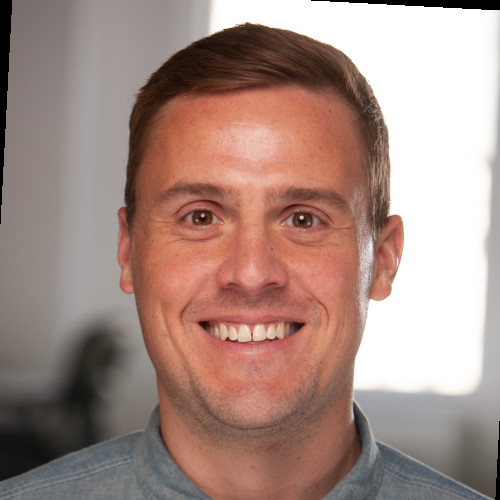
Ben Pippenger
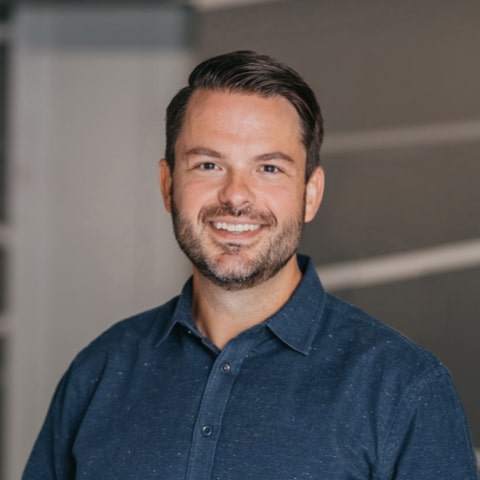
Cory Wheeler
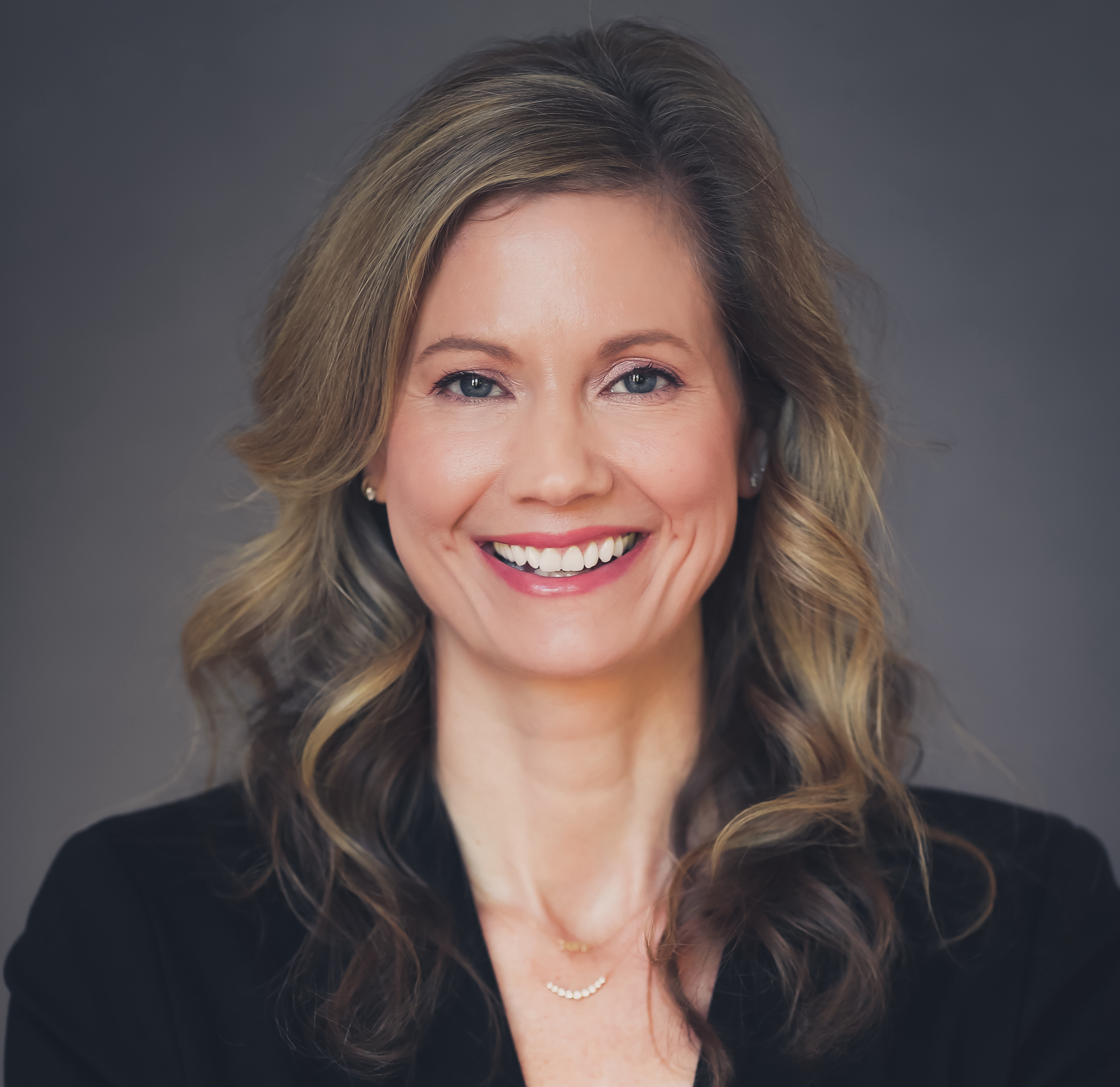
Meredith Albertson
Today's Guests
